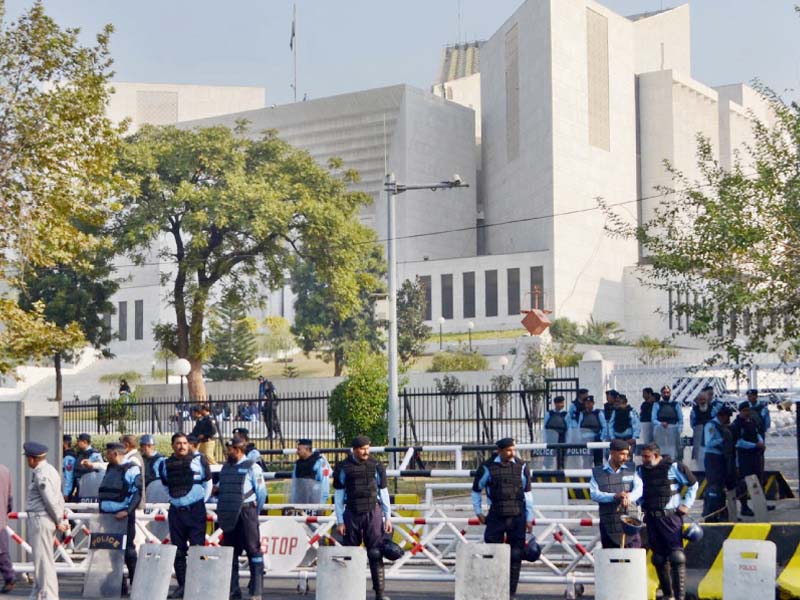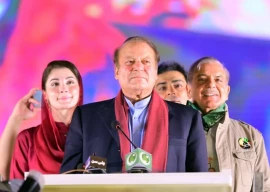
Barring consolidation of gains on the China-Pakistan Economic Corridor (CPEC) front, largely observing fiscal discipline, and building foreign currency reserves, the government again failed to deliver on areas that were critical for placing the economy on a strong footing.
While the Pakistan Stock Exchange remained a shining star in 2016, its contribution to the real economic growth remains debatable. Perhaps it was the government’s luck, but an overall sense of economic stabilisation remained on the economic horizon, largely because of the booming stock market and the completion of the three-year $6.2 billion IMF bailout programme.
The successful but gradual implementation of the $54 billion CPEC was the only high point of 2016. Towards the end of the year, the government also managed to assuage resentment in the smaller provinces over CPEC. This only happened after the government took meaningful actions and moved away from rhetoric.
However, after the successful culmination of the IMF programme, weaknesses started appearing even in areas of strength, like fiscal consolidation and foreign currency reserves. From November, the official foreign currency reserves started depleting by almost $150 a week. In the words of former finance minister Dr Salman Shah, after the culmination of the IMF programme, “the government has thrown the caution to the wind.”
In 2016, Pakistan’s economy also made a gradual shift to cash as protection against the government’s taxation policies. This was contrary to the global trends. In 2015-16, the currency in circulation expanded 30.5% as compared to 17.3% a year before, according to the central bank.
In 2016, Pakistan’s economy had reached a pivotal point where it needed a national consensus to move ahead with privatisation and restructuring of loss-making enterprises. It failed to cash on the opportunity. The three mammoth taxpayer money guzzlers – Pakistan Steel Mills, Pakistan International Airlines and Pakistan Railways – could not be privatised or restructured.
Power sector bleeding could not be stopped and circular debt again piled up to Rs665 billion, including arrears parked in a power holding company. However, the Ministry of Water and Power did slightly improve bill collection and marginally reduced line losses.
On the taxation front, from retailers to property dealers, almost everyone won tax concessions due to the weakening writ of the government. They availed the schemes to whiten their hidden assets but in return, the FBR got nothing. It was an area where the government took decisions by keeping in mind the 2018 elections.
A report by an independent think tank puts the economic performance of the government in following terms. The ruling party has “obsessed itself with the cliché of developing infrastructure by moving away from the sustainable economic reforms path,” stated the ‘Bad Economics is Bad Politics’ report of the Policy Research Institute of Market Economy (PRIME). The report said the government’s economic policies were geared towards achieving goals that in its view would fetch votes in the next elections. The report dubbed the fiscal year 2016-17 budget as an ‘election year budget’.
The performance on fronts of investment, savings and exports remained poor, deepening the government’s dependence on foreign lenders to run its economic and financial affairs. The investment-to-GDP ratio remained almost stagnant at 15.2%. Savings remained almost stagnant at 14.5% of GDP. Exports plunged to years’ low level.
Pakistan remained among the bottom 20 in the list of 138 countries ranked on the influential Global Competitiveness Index of the World Economic Forum and stood at the bottom among South Asian economies, trailing behind even Nepal and Bangladesh.
The government’s economic policies suffocated growth, increased unemployment and income inequality. To meet its targets, the government resorted to unprecedented level of taxation, which affected poor and middle-income groups more than the rich. It reversed some of tariff liberalisation reforms to achieve tax targets. However, it reduced the number of slabs to four under an IMF condition.
In today’s global production chain, customs duties are considered a barrier to exports.
“In Pakistan, it seems the poor are subjected to heavy and harsh indirect taxation and the elite are enjoying free perquisites and benefits, including purchase of valuable state-owned plots at prime locations at throwaway prices,” stated the government-constituted Tax Reforms Commission in a report.
Transparency in economic decision-making was visibly lacking. The government did not make public its negotiations with Qatar for the $16 billion Liquefied Natural Gas deal. The adverse impact of a ‘seller-favouring’ $16-billion deal with Qatar for import of LNG started appearing in 2016 when the government approved a new implementation agreement for three LNG-fired power plants, which violated the least cost generation policy.
The unemployment rate remained high and there was no official plan to tackle it.
The top most two priorities of the government remained building foreign currency reserves, largely by borrowings, and curtailing to budget deficit by cutting development spending and parking some expenses outside the budget.
On the fiscal front, the government successfully managed the budgetary books, largely to the satisfaction of the IMF. Independent economists again expressed serious reservations over the manner the finance ministry handled the books. They leveled allegations of figure fudging. However, the politically lenient IMF ignored these serious allegations, which were not without base.
Finance Minister Ishaq Dar proposed during the year to get the provisional economic growth figure of 4.7% vetted by an international expert after his critics blamed him for manipulating data and destroying the country’s economic statistics to paint a rosy picture. He could not fulfill the promise and resultantly the creditably of the official data remains questionable.
Depressed global oil prices triggered massive layoffs of Pakistani workers in Gulf countries, which not only affected remittances but also well-being of households, largely in rural areas. The government did not have a plan to deal with this situation.
2016 was the year when the PML-N government apparently forewent the $800 million in arrears from the privatisation of Pakistan Telecommunications Limited. It did not mention the liability in the 2016-17 budget books.
Published in The Express Tribune, January 1st, 2017.































1714024018-0/ModiLara-(1)1714024018-0-270x192.webp)









COMMENTS (3)
Comments are moderated and generally will be posted if they are on-topic and not abusive.
For more information, please see our Comments FAQ